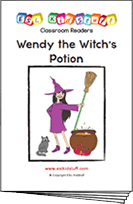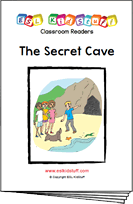Shopping lesson plan
Stand-alone lesson ESL kids lesson plan
Lesson plans for ESL kids teachers
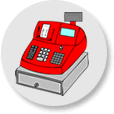
Shopping
In this lesson, students role play going shopping and asking for prices. They ask shopping related questions, do an info gap worksheet activity, read a fun story, play a shopping board game and role play buying things.
Members get accompanying worksheets, board game and classroom reader.
Download materials:
Our lesson plans are FREE!
Sign up for accompanying:
✔ worksheets
✔ homework sheets
✔ craft sheets
✔ flashcards
✔ song downloads & videos
✔ classroom readers & videos
Click to see lesson details, materials and supplies
Time: 40 mins – 1 hour
Objectives: Talking about shopping and money.
Structures: “May I help you?”, “Yes, please”, “Here you are”, “Thank you”. “How much is is/are?”, “Do you have (Have you got) a/any …?”, “Do you want … or …?”, “That’s expensive!”, “I’ll take it!”.
Target vocabulary: various shopping items.
Lesson materials
Printables:
- A/B Shop worksheets (sheets A and B)
- Reader worksheet
- Shopping game (sheets 1 and 2)
- How much is/are 1 worksheet
Readers:
- Wendy the witch’s potion
Additional materials:
- Shopping vocab crossword
- Shopping vocab word search
- Let’s go shopping worksheet
Supplies:
- [hide_on_uk]colored[/hide_on_uk][hide_on_us]coloured[/hide_on_us] pencils
- 8-10 objects for the “Guess the price” game (see point 1)
- dice – enough for one per pair of students (see point 7)
- counters – enough to give one to each student (see point 7)
- toy money (see point 8)
- paper or plastic shopping bags – one per student (see point 8)
- board with marker / chalk
This is a fun, action packed lesson based around the topic of shopping. Students role play going shopping for different objects and asking for prices. Students will need to have a good command of numbers (for prices) to do this lesson.
Lesson procedure:
Warm up and maintenance:
The beginning of your lesson is extremely important: this is where you set the tone of your lesson and get everyone in the right frame of mind for learning English. It is also an opportunity to check homework and review previous lessons.
Click for warm up suggestions for the start of your lessons
These activities can be done in the following order at the start of your lesson:

1. Greetings and name tags
Greet the students by name as they enter the classroom and gesture for them to sit down. Before class prepare some blank name tags (stickers or pin-on tags). Give these out and have everyone write their names and put their tags on. If you use pin-on tags, you can keep and give out every class.

2. Homework check
Check each student’s homework set in the last lesson. Ask each student some questions about their homework worksheet (e.g. “what [hide_on_uk]color[/hide_on_uk][hide_on_us]colour[/hide_on_us] is it?”), give lots of praise, and then put some kind of mark on the homework sheet (e.g. a sticker, a stamp or draw a smiley face). Finally, tell your students to put their homework back into their bags.
3. Review past lessons
Reviewing past lessons is very important – students need constant practice of new vocab, structures, songs, games and so on. Always review parts of your last lesson as well as some parts from other previous lessons. You can spend 5-10 minutes reviewing – it’s fine to recycle games and activities from your past lessons to review as kids enjoy playing familiar games (although be careful not to play a game to death!). See the section “Other ideas to include in your warm” below for ideas.
You can also include review activities in the main body of your lesson. Kids can have short attention spans so it’s good to be able to pull out lots of activities during different stages of the lesson.
Other ideas to include in your warm up:
Ball pass questions
This is good to review questions from previous lessons. Get everybody standing in a circle.
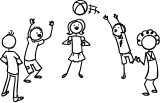
Round 1:
Take a ball and hold it and say, “My name is (you name)”. Then throw the ball to one student and say, “What’s your name?”. Students throw the ball around randomly, saying their names and asking for names.
Round 2:
This time ask a review question, e.g. “How many tables are there?”. Then throw the ball to a student who should answer, “There are (6) tables”. Help if necessary. Then that student throws the ball to another student and asks a “How many …?” question. Continue so everyone has a go. You can have multiple rounds with different topic questions.

Play “Spin the bottle”
Sit students in a circle with a bottle in the middle. Teacher spins the bottle. When it stops spinning the student it is pointing to has to answer a question. If the answer is correct then that student can spin the bottle. This is a good class warm up activity (e.g. How are you? What’s your [hide_on_uk]favorite[/hide_on_uk][hide_on_us]favourite[/hide_on_us] food? How’s the weather today?, etc.
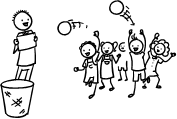
Play “Vocabulary basketball”
This is a fun game which reviews vocabulary from previous lessons. You will need a basket (a trash can) and 2 balls (or 2 pieces of A4 paper scrunched up into balls).
Form 2 teams and line them up so that two players from each team are facing the front with the basket in front of them. Let both players throw their ball – if they get their ball into the basket they can try and win a point by giving the correct answer to a question the teacher asks. This can be an actual question (e.g. What are you wearing?) or a flashcard (What’s this?). Then they go to the back of the line. At the end, the team with the most points is the winner!
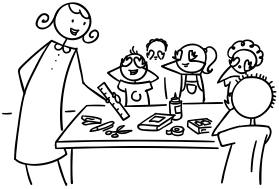
Play “What’s missing?”
This is a fun review memory game – students will have to try to remember review objects from previous lessons (e.g. classroom stationery). Lay the objects out on a table for all to see. Allow the students a minute to memorize the positions of the objects. Remove an object and hold it behind your back. Say, “Open your eyes!” – the first student who can shout out the missing object wins a point for his/her team. Play for all the objects.
Finally, calculate which team has won the most points and give them a round of applause.

Play “Quiz game show”
This is a fun quiz game, like a simple version of a TV game show. Draw some circles on the board and randomly write numbers 1, 2 or 3 in each circle. These will be points.
Put students into teams. Then ask the first team to choose a number – 1 is an easy question (e.g. “Do you like bananas?”) and 3 is a difficult question (e.g. point at a clock and ask, “What time is it?”). 2 will be in between in terms of difficulty. When the question has been answered correctly, erase that number circle. Play until all the number circles are gone – the team with the most points is the winner!
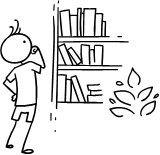
Read a classroom reader again
As you progress through the lessons you will start to build up a catalog of classroom readers (see our Readers download page at https://www.eslkidstuff.com). Kids love going back to old stories and reading through them again. Invite a student to pick a classroom reader and read through it as a class. Make the story as interactive as possible by asking questions (e.g. what [hide_on_uk]colors[/hide_on_uk][hide_on_us]colours[/hide_on_us] there are, the names of different objects, etc.) and getting students to speculate what is going to happen next in the story.

Talk about the weather (do after you have taught the weather lesson plan).
- Prepare a weather board. Before the first class prepare a piece of cardboard and cover it with felt – you are going to pin this to the wall. If you can, try and get blue felt (to represent the sky). Write at the top in large letters, “How’s the weather today?”. Below that write “Today it’s”. Cut out weather pictures (such as our weather flashcards) and stick some velcro on the back. Arrange the weather pictures around the edge of the board and then put the board on the wall of your classroom. You can now use this weather board at the beginning of every lesson.
- Ask about the weather. Ask, “How’s the weather today?” and have students put up their hands. Allow one weather condition per student (e.g. “It’s rainy”) and have each student come up and put a weather picture on the weather board.
- Introduce more weather vocabulary. Depending on weather conditions, you can introduce more weather words (with pictures … you can get students to draw them), such as:
- stormy
- misty
- showery
- freezing
- humid
- frosty
- icy
- drizzly
New learning and practice:
1. Play “Guess the price”
Before class, prepare 8 to 10 objects that you know the prices of in the local currency (check in stores or online for current prices). Some ideas: food/drink, electronic products, household goods, clothes, newspapers/magazines, toothbrush, stationery, watches, [hide_on_uk]jewelry[/hide_on_uk][hide_on_us]jewellery[/hide_on_us], etc. Use objects in different price ranges and make sure some objects are plurals (e.g. shoes, bananas).
In class, lay out the objects along a table so everyone can see all the objects. Start by eliciting the vocabulary of each object. Then tell the class they are going to play a price guessing game. Put students in pairs or small groups and give each group a piece of paper. Set a time limit of 3 minutes and have the groups discuss and write down their guesses for the prices of each object.
Next, we are going to find out which group guessed the closest for each object – but to do so your students will have to ask you for the prices of the objects … (see next point)
2. Introduce the structure “How much is/are …?”
Draw two of the objects from the table on the board – on the left a singular object and on the right a plural object. Write on the board the following using your local currency symbol):
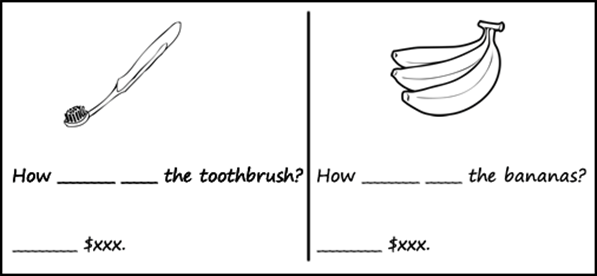
Elicit the missing words:
How much is the toothbrush?
It’s $xxx.
How much are the bananas?
They’re $xxx.
Now you have the structures in place you can complete the “Guess the price” game. For the first object, have a student use the structure on the board to ask you for the price. Say the price. Find out which group guessed the closest – the group (or groups) that does wins 1 point, however, anyone who guesses the exact price gets 2 points. Do this for each object, each time having a different student ask for the price. At the end, find out which group is the winner with the most points.
3. Practice asking for prices
First, we’ll start with a controlled practice. In the pairs, students take turns asking for the prices of the objects from the “Guess the price” game using the structures on the board. Monitor and check that everyone is using the singular/plural form correctly.
Next, put students into different pairs. Model the activity with another student to show the class what to do, as follows:
Teacher: What’s that? (pointing at the student’s pen)
Student: It’s a pen.
Teacher: How much is it?
Student: It’s about (150 yen).
Notice, we have used a question with the pronoun “it” instead of the object. Write this question on the board. Then elicit the plural form and also write it on the board, as follows:
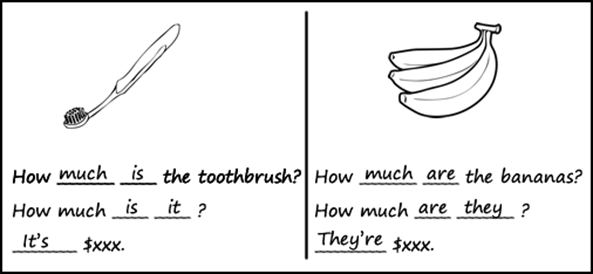
Students then take turns asking their partner questions about the prices of things on their desks, in their pencil cases, in their bags and pockets, their clothes and accessories and around the classroom. As students are speaking, write any good expressions you hear on the board. Encourage students to use expressions such as:
- I’m not sure, but I think (it’s about 8 euros).
- I have no idea! Maybe (they’re $30).
- That’s cheap / expensive / reasonable!
- It’s very nice / lovely / pretty / amazing.
- etc.
4. Do the “A/B Shop” pair worksheet
Students need to work in pairs again for this activity. Give out the worksheets – “A’s Shopping list” to one student in the pair and “B’s Shopping list” to the other. Students then take turns asking how much the items are on the other student’s sheet to complete their shopping lists.
5. Read classroom reader “Wendy the witch’s potion”
This reader really helps to reinforce the new structures with a fun story about a witch’s shopping trip. Before class, download and print out the reader “Wendy the witch’s potion”. As you go through each page, point to the pictures of the ingredients and get everyone to speculate what they might be, for example:
Teacher: (reading from page 3 and 4) “Hello, may I help you?”, “Hello, Yes, please”. Look at those (on page 4). What do you think the witch is holding?
Students: Frogs legs?
Teacher: Let’s check. (reading) … “6 frogs legs, please”. You were right! Yuk!
Continue through the story, getting everyone to say what they think the ingredients are from the pictures.
After reading the story, give out a reader worksheet to each student and have pairs or small groups fill in Wendy’s shopping list from memory. Finally, quickly read through the story again to check the answers.
Alternatively, watch our video version of the reader (Internet connection required).
6. Introduce some more shopping phrases
The classroom reader introduced some more useful shopping phrases. Let’s see if your students can remember some. Tell the class that you are going to write some phrases from the story on the board. Students should copy them into their notebooks, filling in the missing words as they go (answers in parenthesis):
- Hello, ______ I ________ you? (Hello, may I help you?)
- Hello. Yes, _____________. (Hello. Yes, please.)
- 6 frogs legs, ___________. (6 frogs legs, please.)
- _______ you are. (Here you are.)
- __________ you. (Thank you.)
- _____ much ___ it? (How much is it?)
- _____ much ___ they? (How much are they?)
- _____ you ______ a monster’s finger? ([hide_on_uk]Do you have[/hide_on_uk][hide_on_us]Have you got[/hide_on_us] a monster’s finger?)
- _____ you ______ _____ spider’s legs? ([hide_on_uk]Do you have[/hide_on_uk][hide_on_us]Have you got[/hide_on_us] any spider’s legs?)
- _____ you ________ red ___ green? (Do you want red or green?)
Students can check their answers with their partners. Then ask individual students to come up to the board and fill in missing blanks.
Point out the difference of a/any in:
- [hide_on_uk]Do you have[/hide_on_uk][hide_on_us]Have you got[/hide_on_us] a monster’s finger?
- [hide_on_uk]Do you have[/hide_on_uk][hide_on_us]Have you got[/hide_on_us] any spider’s legs?
Ask if anyone can tell you what the difference is. Then explain, using examples, that we use singular when we only expect there to be one item, and use plural when we expect there to be more then one item (a good example is in a student’s pencil case – it would be more natural to say “Do you have a stapler?” than “any staplers”).
7. Play the “Shopping board game”
Students will now practice using the phrases on the board by playing a fun board game. Before class, print out enough copies “Shopping game” sheets 1 and 2 for each pair.
In class, put students in pairs and give each pair a game board (sheet 2). Elicit the object drawings on the game board. Then give out sheet 1 and read the instructions. Pairs will need a dice and each player a counter to move around the board. Players then roll the dice and move around the board, stopping to have shopping conversions until they have bought all of the items on their shopping list.
As everyone is playing, walk around and help with vocabulary and mistakes.
8. Play “Classroom shopping”
We’ll finish with a fun activity that practices all of the lesson’s structures. Students are going to walk around the classroom having shopping conversations with other students and buying objects with money.
You’ll need some toy money for this game (e.g. Monopoly game money) and paper or plastic shopping bags (one per student).
Start by telling everyone they must put three of their personal items on the table at the front of the class. Anything will do – phones, pens, dictionaries, rings, shoe laces, etc. Then take out the shopping bags and randomly put the students’ items into the bags, so that each bag has three different items in them. Make sure students don’t see which bags you put their items in – a good idea is to have everyone cover their eyes when you do this.
Now, give each student a bag and ask them to look inside their bag. If anyone has any of their own personal items in their bag they must bring them back to the table at the front, and then the teacher puts them in different student’s bags. The idea is to make sure each student has a bag with three items in, none of which are their own.
Tell students that they must find their items and buy them back!
Divide out the toy money so that everyone has the same amount (it doesn’t matter how much each student has).
Now model the activity. Indicate that you are looking for your red pen (give to a student and put in his/her shopping bag). First, go to one student who doesn’t have your pen and roleplay (gesturing at the phrases on the board when necessary):
Teacher: Hello.
Student: Hello, may I help you?
Teacher: Yes, please. [hide_on_uk]Do you have[/hide_on_uk][hide_on_us]Have you got[/hide_on_us] any pens?
Student: No, sorry. I [hide_on_uk]don’t[/hide_on_uk][hide_on_us]haven’t[/hide_on_us].
Teacher: Ok, thank you. Goodbye.
Next, go to the student who does have you pen. Again, roleplay:
Teacher: Hello.
Student: Hello, may I help you?
Teacher: Yes, please. [hide_on_uk]Do you have[/hide_on_uk][hide_on_us]Have you got[/hide_on_us] any pens?
Student: Do you want red or blue?
Teacher: Red, please.
Student: Yes, I [hide_on_uk]do[/hide_on_uk][hide_on_us]have[/hide_on_us]!
Teacher: How much is it?
Student: Umm. It’s $40.
Teacher: $40! That’s expensive! How about $20?
Student: Ok, here you are.
Teacher: Thank you!
Student: You’re welcome.
Take you pen, put it in your bag and hand over the toy money. Explain the objective is to find and buy back your items with the toy money.
Have students mingle around the classroom asking for their items and negotiating to get their items back. This can be a lot of fun as some students are sure to bargain for high prices and some may run out of money!
At then end, find out who has managed to buy all three of their items back and who is the best businessperson by making the most money!
Wrap up:
Assign homework: “How much is/are 1” worksheet
Click for wrap up suggestions for the end of your lessons

1. Assign homework
Each week give out a homework worksheet for your students to take home. Hold up the homework worksheet and model how to do it. Give out the worksheets and say, “Put your homework in your bags”.

2. Do “Quick check”
Time to leave the class. Make sure everything is put away and the students have gathered their belongings. Have them line up at the door and place yourself between the door and the students. For each student check one new word or phrase, for example:
- hold up an object or flashcard (such as an item of clothing) and ask, “What’s this?”
- ask a question from the lesson (e.g. “Where do you live?”, “Do you like bananas?”, “Can you play chess?”, etc.)
When they give you the correct answer say goodbye and let them leave. If their answer is wrong, have them go back to the end of the line – they will have to try again once they reach the front!
Other lesson plans
Actions, verbs & tenses:
- Can – for ability
- Morning routines
- Daily routines & times of the day
- Actions – Present continuous
- Future plans using “going to”
- Past tense activities – Regular verbs
- Past tense activities – Irregular verbs: Part 1
- Past tense activities – Irregular verbs: Part 2
Adjectives:
- Describing people
- Describing things
- Comparing things (Comparative adjectives)
- Comparing things (Superlative adjectives)
Adverbs:
Alphabet:
Animals:
Body:
Classroom:
Clothes:
Colors:
Colours:
Directions:
Family:
Feelings & emotions:
Food:
Health & sickness:
Holidays & festivals:
Jobs:
Likes, dislikes & favorites:
Likes, dislikes & favourites:
- Likes & dislikes
- [hide_on_uk]Favorites[/hide_on_uk][hide_on_us]Favourites[/hide_on_us] and asking why
Nature & Our world:
Numbers:
Places & where we live:
Prepositions of location:
Pronouns:
Shapes:
Shopping:
Sports:
Time, days, months, seasons:
Toys:
Transport & travel:
Weather:


